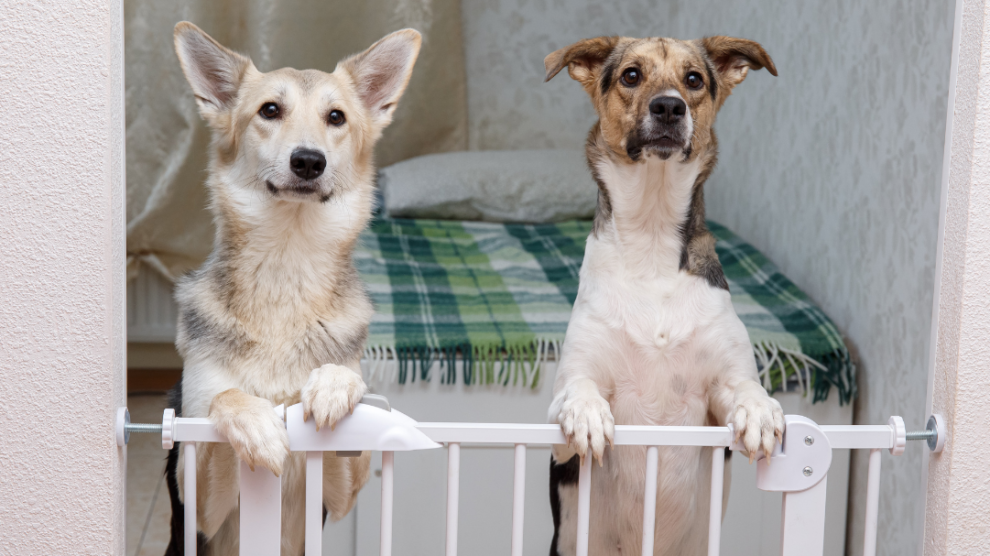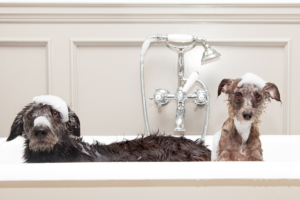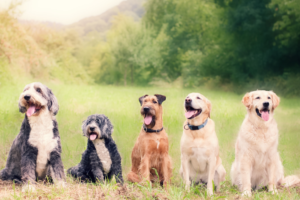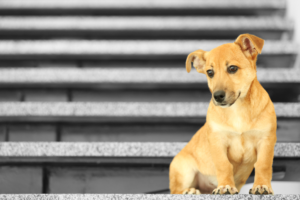A Dog Gate Guide for Pet Owners
Dog gates are essential for pet owners who want to create safe, designated spaces for their furry friends. Whether you need to keep your dog out of certain rooms, prevent access to stairs, or provide a cozy play area, a quality dog gate can be a valuable tool. However, with so many types, materials, and features available, choosing the right dog gate can feel overwhelming. This guide will walk you through what to consider when selecting an effective dog gate that meets both your needs and your dog’s comfort.
Why Use a Dog Gate?
Dog gates serve multiple purposes that can benefit both pets and pet owners:
- Safety: Gates help protect dogs from potentially dangerous areas, such as stairs, kitchens, or rooms with delicate objects.
- Boundary Setting: Gates provide structure, especially during training, helping dogs learn which areas are off-limits.
- Room Control: For multi-pet households, gates can be used to separate animals and prevent conflict or control feeding times.
- Protect Your Home: Gates can protect furniture, rugs, or other items from curious pups, especially during the teething or chewing stages.
Factors to Consider When Choosing a Gate
Selecting the right dog gate depends on your specific needs, your dog’s size, and the environment. Here are the key factors to consider:
1. Type of Dog Gate
Dog gates come in a variety of types, each with its unique benefits and best-use cases:
- Freestanding Gates: These gates are portable and don’t require mounting, making them ideal for temporary use. However, they may not be as secure as other options, especially for large or determined dogs.
- Pressure-Mounted Gates: These gates are easy to install and leave no marks on walls, as they use tension to stay in place. They’re great for areas with frequent traffic but might not withstand larger dogs leaning or jumping on them.
- Hardware-Mounted Gates: For maximum security, hardware-mounted gates are attached to the wall with screws. These gates are excellent for staircases and for households with strong, active dogs, as they are difficult to dislodge.
- Convertible Gates: Convertible gates are versatile and can be adjusted into various configurations, including playpens or room dividers. These are ideal for pet owners who need flexibility.
Choose a gate type based on the intended location and your dog’s behavior. For instance, a hardware-mounted gate is ideal for the top of stairs, while a freestanding gate may be sufficient for doorways.
2. Size and Height
The gate’s height and width are crucial, especially if you have a larger or more agile dog:
- Height: For small dogs, a 24-inch gate may suffice, but medium and large breeds may need a gate at least 30 to 40 inches tall. If your dog is a jumper, consider a taller gate to prevent escapes.
- Width: Measure the width of the space where you intend to place the gate, as gates come in various widths. Some gates are adjustable, making them suitable for different spaces, while others have fixed widths that require exact measurements.
Make sure to choose a gate tall and wide enough to contain your dog while providing a comfortable boundary.
3. Material and Durability
Dog gates come in various materials, including metal, wood, and plastic. Each has its pros and cons:
- Metal Gates: Metal gates are typically durable and can withstand chewing, scratching, and pushing from larger dogs. They’re ideal for high-traffic areas and active dogs.
- Wooden Gates: Wooden gates are stylish and often blend better with home decor. However, they may not be as durable if your dog tends to chew or scratch.
- Plastic Gates: Lightweight and affordable, plastic gates are suitable for small dogs or puppies. They’re easy to clean but may not withstand a large or aggressive dog.
Choose a material that can withstand your dog’s energy level and behavior, while also considering the aesthetic of your home.
4. Ease of Use and Accessibility
Convenience is an important factor, as you’ll need to move through the gate regularly:
- Walk-Through Gates: Many dog gates have a door within the gate, allowing people to pass through easily. Look for walk-through gates with secure latches that dogs can’t open.
- Auto-Close Feature: Some gates have auto-close mechanisms, ensuring the gate locks behind you. This feature is especially useful if you have children or are often carrying items in and out of the gated area.
- One-Hand Operation: Gates with one-hand operation latches are convenient for those who need to hold a leash, groceries, or other items while opening the gate.
Accessibility features make it easy to navigate the gate while keeping your dog safely contained.
5. Additional Features and Safety Considerations
Consider any additional features that could enhance the gate’s functionality or safety:
- Chew-Proof Coating: If your dog tends to chew, look for gates with a chew-resistant coating to prevent damage.
- Non-Slip Base: Gates with non-slip pads or feet offer extra stability and protect your floors.
- Locking Mechanism: A secure locking system is essential to prevent your dog from nudging or pawing the gate open.
Safety is paramount, so always choose a gate with features that suit your dog’s size, strength, and temperament.
Where to Place Your Gate
Dog gates are versatile and can be used in several areas of the home:
- Stairs: Place a hardware-mounted gate at the top or bottom of the stairs to prevent accidents and provide a clear boundary.
- Kitchen or Living Room: Use a gate to keep your dog out of rooms where they might get into food, trash, or delicate items.
- Bedrooms or Bathrooms: Gates can help control access to bedrooms or bathrooms, especially if you have guests or want to keep your dog from chewing on personal belongings.
- Outdoor Spaces: Certain gates are designed for outdoor use and can be helpful if you want to restrict your dog’s access to certain areas of your yard or patio.
Woof. Woof.
Choosing an effective dog gate depends on your dog’s behavior, the gate’s location, and your lifestyle. From freestanding gates to hardware-mounted options, there are choices for every household. Prioritize size, material, and safety features, and think about how you’ll be using the gate daily.
An effective dog gate can improve your home’s safety and create boundaries that make life easier for both you and your dog. Whether you need a temporary boundary or a permanent fixture, selecting the right gate ensures your pet stays secure and your home stays organized.





























